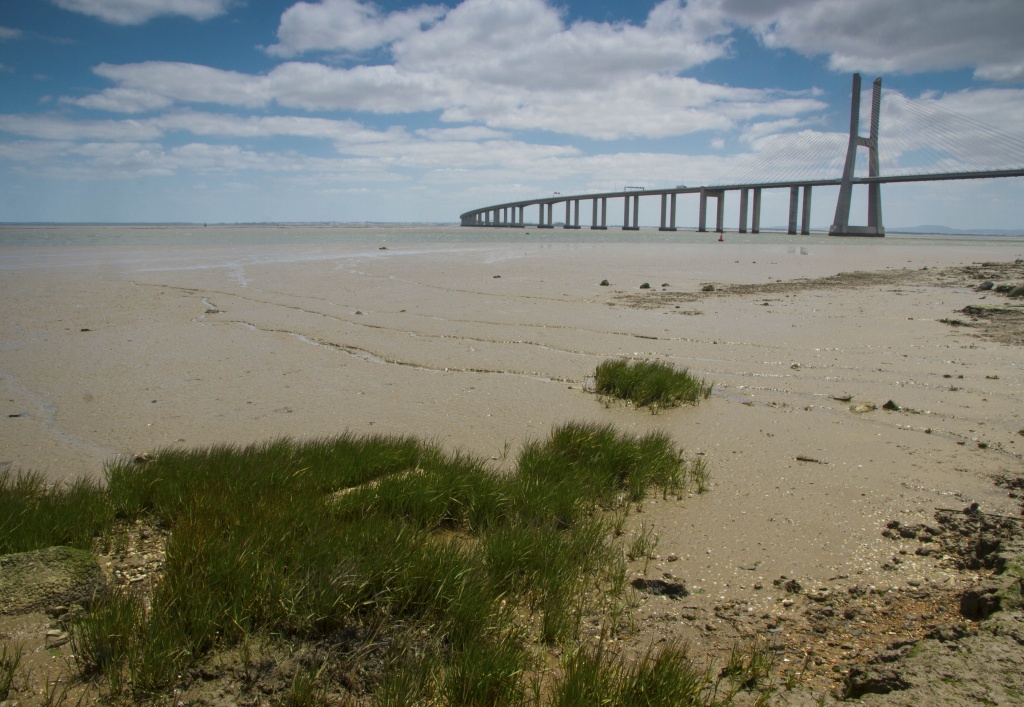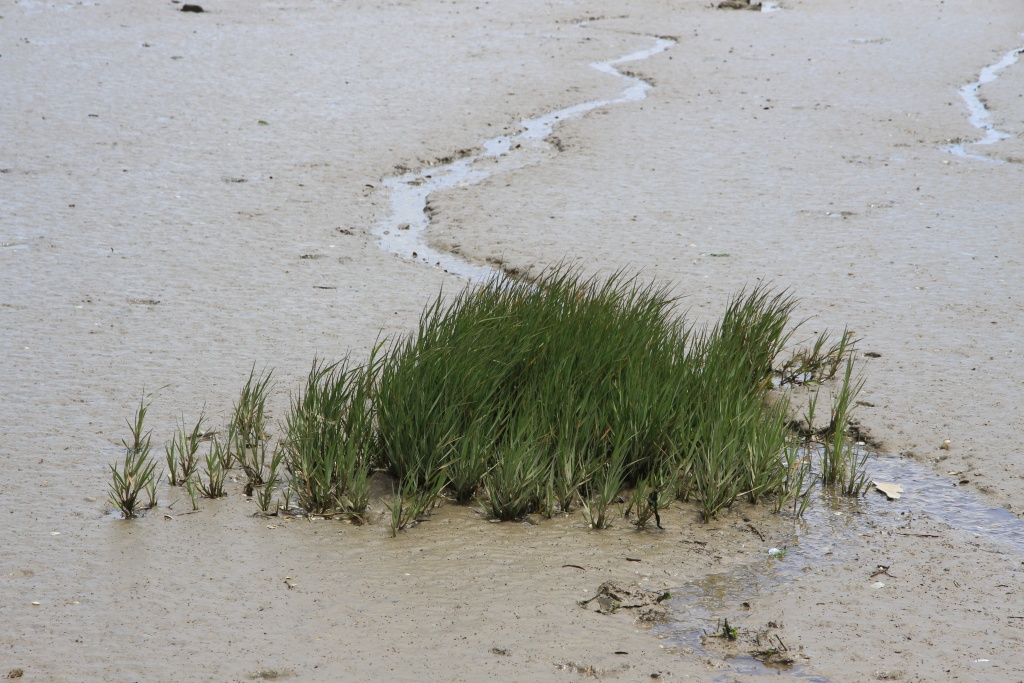
Tagus River Saltmarsh. Nation’s Park North Zone. Lisbon. In addition to the ecological value, the economic value of the saltmarshes cannot be ignored, since 70% of the species with fishing interests[1] go through most of its life cycles in the estuarine zones.

Spartina maritima (common name Morraça) in Tagus River Saltmarsh (March 2013). It’s a plant that belongs to the Gramineae family, which is frequently seen in the coastline, mainly in the central and southern part of the country.
In the Tagus River Saltmarsh, the pollution is a stress factor to the biodiversity. Its close proximity to the urban and industrial zones leads to the accumulation of heavy metals in the water and the soil.
Some plants help cleaning up these types of soils. One example of these kind plants is Spartina maritima. Isabel Caçador, researcher from the University of Lisbon, highlights this plant’s part in phytoremediation.
A study developed by some students of Colégio Valsassina reveals that the copper levels are higher inside the plant than in the soil near her. Therefore, reducing the levels of toxicity to other species that depend on these types of habitats. This shows how important this saltmarshes are in the depuration of the estuarine system, revealing its role as “the planet’s kidneys”. Perhaps one of the most significant ecosystem services provided by saltmarshes.
Ana Catarina Pauleta, Beatriz Chagas, Mariana Monteiro.
Colégio Valsassina
Acknowledges
This project would not be possible to develop if it weren’t for the collaboration of the professor Isabel Caçador from the Faculty of Sciences, University of Lisbon, and the professor Maria Luísa Mateus from the Faculty of Pharmacy, University of Lisbon.
Note:
The project “Contributo para o estudo da Spartina marítima na despoluição dos solos do sapal do Tejo (Parque das Nações)” was developed between October of 2012 and April of 2013 by Ana Catarina Pauleta, Beatriz Maria Chagas, Mariana Isabel Monteiro, 11th grade students of Colégio Valsassina.
This project had the collaboration of the professor Isabel Caçador from the Science Faculty, University of Lisbon, and the professor Dra. Maria Luísa Mateus from the Faculty of Pharmacy, University of Lisbon.
The final project is available if asked.
[1] Stydy published in Visão magazine in 2/2/2011. Available in http://visao.sapo.pt/agua-salobra-e-vida=f588536. Consulted in Abril 23 of 2013.



You must be logged in to post a comment.